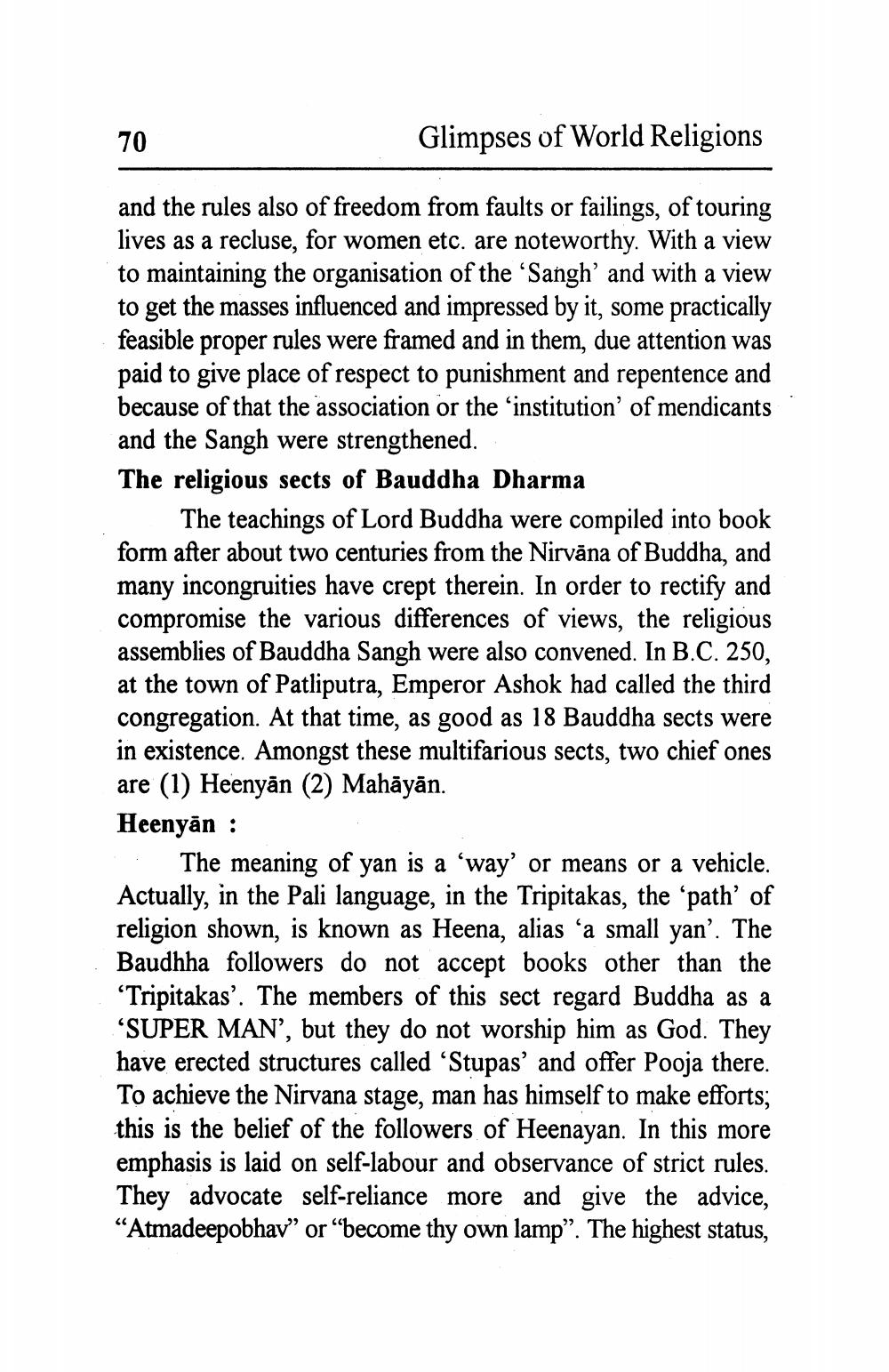________________
Glimpses of World Religions
and the rules also of freedom from faults or failings, of touring lives as a recluse, for women etc. are noteworthy. With a view to maintaining the organisation of the ‘Sangh' and with a view to get the masses influenced and impressed by it, some practically feasible proper rules were framed and in them, due attention was paid to give place of respect to punishment and repentence and because of that the association or the 'institution of mendicants and the Sangh were strengthened. The religious sects of Bauddha Dharma
The teachings of Lord Buddha were compiled into book form after about two centuries from the Nirvāna of Buddha, and many incongruities have crept therein. In order to rectify and compromise the various differences of views, the religious assemblies of Bauddha Sangh were also convened. In B.C. 250, at the town of Patliputra, Emperor Ashok had called the third congregation. At that time, as good as 18 Bauddha sects were in existence. Amongst these multifarious sects, two chief ones are (1) Heenyẫn (2) Mahāyān. Heenyān :
The meaning of yan is a 'way' or means or a vehicle. Actually, in the Pali language, in the Tripitakas, the 'path' of religion shown, is known as Heena, alias 'a small yan'. The Baudhha followers do not accept books other than the 'Tripitakas'. The members of this sect regard Buddha as a 'SUPER MAN’, but they do not worship him as God. They have erected structures called “Stupas' and offer Pooja there. To achieve the Nirvana stage, man has himself to make efforts, this is the belief of the followers of Heenayan. In this more emphasis is laid on self-labour and observance of strict rules. They advocate self-reliance more and give the advice, “Atmadeepobhav or “become thy own lamp”. The highest status,




